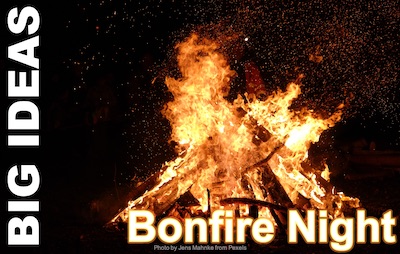
 The lighting of bonfires in the long nights of autumn and winter is a tradition as old as mankind’s occupation of higher latitudes. But Bonfire Night – as the term is used in the UK – has a very specific origin. On 5 November 1605, a group fo Catholic conspirators sought to blow up the Houses of Parliament, while the Protestant king, James I of England and VI of Scotland, was to be there with his family. One conspirator, Guy Fawkes, was found in the cellars with 36 barrels of gunpowder.
The lighting of bonfires in the long nights of autumn and winter is a tradition as old as mankind’s occupation of higher latitudes. But Bonfire Night – as the term is used in the UK – has a very specific origin. On 5 November 1605, a group fo Catholic conspirators sought to blow up the Houses of Parliament, while the Protestant king, James I of England and VI of Scotland, was to be there with his family. One conspirator, Guy Fawkes, was found in the cellars with 36 barrels of gunpowder.
From that year, the failure of the Gunpowder Plot, as it was known, has been celebrated in Britain – and also in many Commonwealth countries. Since the 1606 law, the ‘Observance of 5th November Act’, commonly called the ‘Thanksgiving Act’, Bonfire Night has been on 5th November. It’s also sometimes called Guy Fawkes’ Night, because it is also a tradition to burn an effigy of the hapless engineer on top of the bonfire; the ‘Guy’ as he is known.
That ‘Guy’ is something of an ‘evil everyman’. It’s now a tradition in some places to replace Fawkes with an effigy of a newsworthy figure of hate or ridicule. This can sometimes give offence. But in Britain, the right to give offence – particularly to politicians and public figures – has long been cherished. Bonfire Night is a good outlet for this spirit.
Continue reading Bonfire Night: Please to Remember the 5th of November
